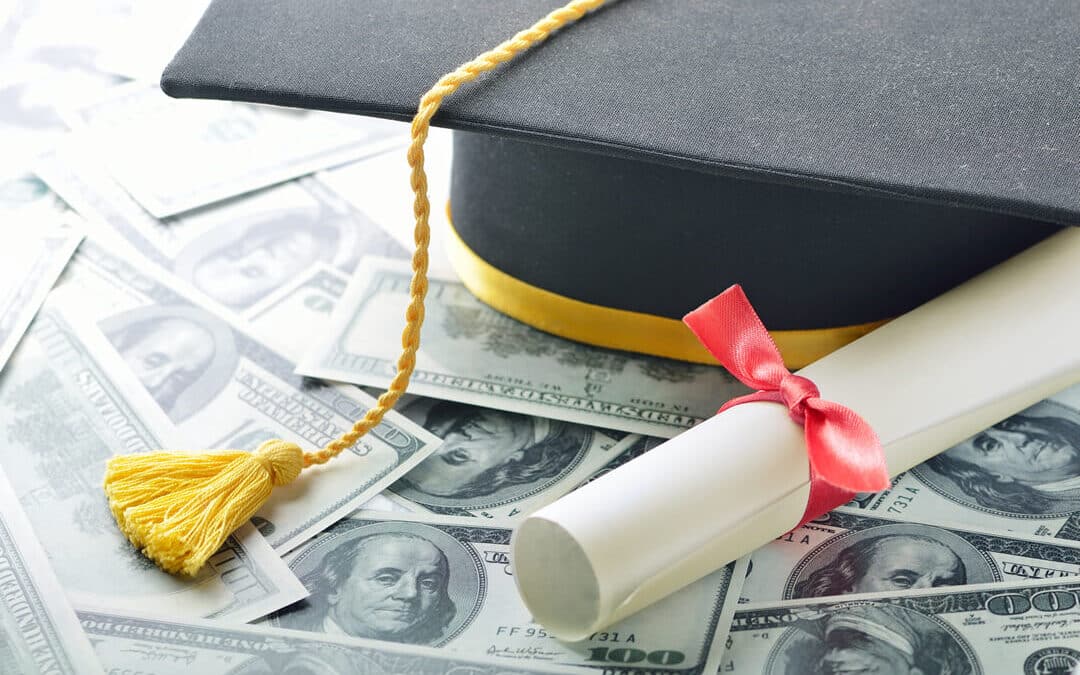The process for obtaining a discharge of federal student loans through bankruptcy has been long and difficult for over a decade. However, times are changing and newly issued guidance to the Department of Justice (DOJ), in connection with the Department of Education (DOE), has laid the groundwork for a more streamlined path for borrowers to discharge their federal student loans through bankruptcy.
If you are struggling to repay your student loans, keep reading to learn more about this change and how it could help you.
Past Regulation of Student Loan Bankruptcy Discharge
Before 1976, student loan debt was afforded no special treatment under the Bankruptcy Code and student loan debt was easily discharged through bankruptcy. Then, the Bankruptcy Code underwent sweeping amendments.. While these amendments did not outright make student loan debt non-dischargeable, they drastically narrowed the pathway for obtaining a discharge of student loan debt. Although technically still possible, the debtor had to prove to the court that paying the student loan would cause an “undue hardship.”
To prove undue hardship the debtor has to show that: (1) they could not maintain a minimal standard of living if forced to repay the loan; (2) the circumstances causing this hardship would continue for a significant portion of the loan repayment period; and (3) the debtor has made good-faith efforts to repay the loan.
These three criteria seem straightforward, but the standard of each has often seemed arbitrary, fluctuated, or was disregarded depending on where a case is heard and the judge presiding over the case. The burden of establishing undue hardship falls on the debtor and their counsel. The lack of clarity regarding what must be established to obtain a discharge of student loan debt has been a huge obstacle to debtors obtaining a discharge of a student loan debt.
But, often the biggest obstacle in past student loan bankruptcy discharge cases has been the pushback from the Department of Justice. As legal representation for the federal government, DOJ lawyers have been tasked with doing everything within their legal power to oppose adversarial proceedings filed by debtors seeking discharge of federal student loans. This means, even if you were successful, and the bankruptcy court decides your student loans were dischargeable, the DOJ would appeal the matter and this would lead to further, more expensive litigation. Under the old policy the cost of persuing a student loan discharge often outweighed the benefit of having the debt discharged.
Student Loan Bankruptcy Discharge Under the New Policy
In November 2022, the DOJ issued new guidance on how it will handle cases of student loan debt discharge. Under the new system, the DOJ will use DOE records and an attestation form filled out by the borrower to assess if a discharge of the federal student loan in bankruptcy is recommended. Similar to the old system, the debtor must establish that making continued payments on the student loan would cause them an undue hardship. However, the new guidance provides specific The new guidelines outline a streamlined system and provides criteria that, if met, will result in the Department of Education stipulating that the federal student loan would result in an undue hardship on the debtor and is dischargeable.The factors to be reviewed include:
Debtor’s Current Ability to Pay: The DOJ will assess the debtor’s reported income and expenses against the IRS-established standard expenses. If the expenses equal or surpass the debtor’s income, then the Department will conclude that the individual does not currently possess the financial capability to pay.
Debtor’s Future Ability to Pay: The DOJ will assess if the debtor is likely to stay unable to pay. The Department will assume no change in circumstances if they meet certain criteria, including age, disability, unemployment record, lack of education, and long-term debt status. On the other hand, if none of those apply, the DOJ will evaluate the facts to decide if the debtor’s present state of non-payment will continue.
Debtor’s Attempts to Make Past Payments: The DOJ will use the information provided by the DOE to see if a borrower has made a genuine effort to pay back their loan. Examples that may show their good faith attempt at paying the loan back include enrollment in an income-based repayment plan and communication with the DOE or federal student loan servicer about options. Other factors may be considered showing that the borrower has been attempting to pay the loan back. Previous non-payment and failure to sign up for an income-driven repayment plan are not automatically grounds for disqualification if there is other evidence of their attempted repayment.
This new policy of determining if a borrower can discharge their student loan through bankruptcy simplifies the process and establishes clear criteria which should result in consistent predictable outcomes when a debtor is seeking a discharge of federal student loan debt in bankruptcy.Although bankruptcy court judges still have the final say and are not obligated to adhere to the DOJ’s suggestion, the DOJ’s stance is likely to be immensely influential and simply not having constant DOJ opposition to the discharge removes a huge hurdle to obtaining relief..
Getting Help Discharging Your Student Loans through Bankruptcy
If you have been struggling with student loan debt, the recent policy changes we have discussed could benefit you. But you may not want to pursue discharging your student loans through bankruptcy without the help of an experienced bankruptcy attorney. Bankruptcy cases depend a lot on each person’s individual financial situation.. Although this new policy will hopefully simplify the process, you may still benefit from a bankruptcy attorney’s knowledge of the bankruptcy process.
Brock and Stout’s bankruptcy attorneys have over 25 years of experience helping clients navigate the bankruptcy process. Contact us for a free evaluation of your financial situation to see if we can help you get free of student loan debt, as well as others, and start on a new path of financial freedom.

